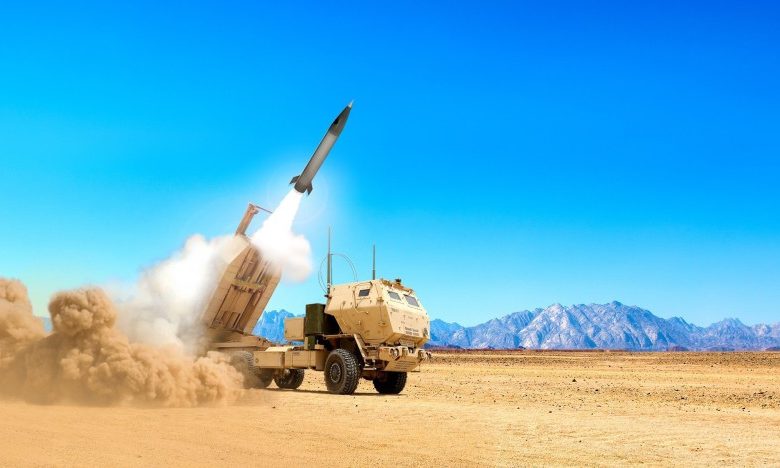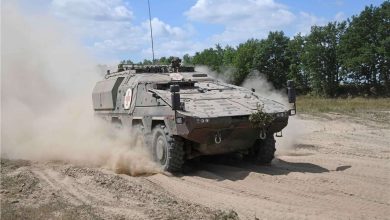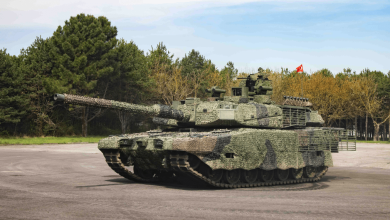
“U.S. Army’s Quest for Cutting-Edge Mid-Range Missiles to Enhance Precision Strikes”
The Army is pursuing a novel mid-range missile system capable of targeting locations from 500 to 1,500 kilometers, or 310 to 930 miles, to assist in bridging a gap in its firepower portfolio by 2023.
Brig. Gen. John Rafferty, head of the Long-Range Precision Fires Cross-Functional Team, mentioned that the surface-to-surface launch capability could be advantageous if stationed in strategic locations like the Pacific island chains.
“What a challenge that would create for our rivals,” he remarked on Sept. 29, alluding to China, identified in the National Defense Strategy as an imminent threat alongside Russia. “How we could shift the dynamics in an instant, if we were able to deploy this level of capability out there.”
The initiative is currently under investigation by his team in collaboration with the Field Artillery School, Fires Capability Development Integration Directorate, and the Rapid Capabilities and Critical Technologies Office.
Precision fire systems are presently the Army’s top modernization focus, as they empower formations to penetrate enemy anti-access and area denial defenses, Rafferty stated.
“It facilitates access at a strategic level and enables combined arms maneuvers at the tactical level,” he expressed during the 2020 Army Fires Conference.
Extended Range Cannon Artillery (ERCA)
The firepower portfolio further encompasses the Extended Range Cannon Artillery, a self-propelled solution mounted on a Paladin Integrated Management howitzer chassis. However, ERCA boasts enhanced firepower with its 58-caliber, 30-foot cannon tube compared to the Paladin’s 39-caliber, 20-foot tube.
The extended tube and a specialized chamber, alongside upgraded projectiles and propellant, enable it to propel artillery shells to 70 kilometers, or over 40 miles, he noted.
Following multiple successful trials, the Army recently sought Soldier input on the system during the 1st Infantry Division’s rotation at the National Training Center in California.
The Army anticipates delivering a set of prototypes to a division artillery battalion in 2023, which will subsequently assess the operational concept of the system, he added.
Precision Strike Missile (PrSM)
The Precision Strike Missile has now successfully completed three flight tests. This surface-to-surface missile aims to extend the range of the Army Tactical Missile System, which has been a staple for nearly four decades.
The PrSM is half the size of its predecessor, which has a maximum firing range of only 300 km, or 180 miles—almost half of the PrSM’s 500 km range. Both missiles deliver the same explosive force.
The forthcoming phase of testing will incorporate four shots, one of which will be launched into the Pacific Ocean from the Californian coastline.
“We’ll proceed to Vandenberg Air Force Base and we’ll test it out into the ocean to evaluate its range,” Rafferty stated.
Strategic Fires
At the outer edge of the portfolio includes two complementary platforms: a long-range cannon system and a hypersonic weapon.
The surface-to-surface capabilities will extend the Army’s reach to thousands of kilometers, he explained.
The Army and Navy successfully conducted tests of a common hypersonic glide vehicle across the Pacific in March. An Army unit is scheduled to begin training on the system without live rounds next year. Following additional assessments, the weapon will be deployed to a missile battery by 2023.
To help mitigate the expenses associated with hypersonic weaponry, the Army is also considering a strategic long-range cannon capable of firing a higher volume of less costly rounds, Rafferty mentioned.
This cannon, expected to launch rounds up to 1,000 km, or 620 miles, is currently under a science and technology investment spearheaded by the Armaments Center at Picatinny Arsenal, New Jersey.
However, the project is not without debate, Rafferty noted, stating that its feasibility is now being scrutinized by the National Academies of Sciences, Engineering, and Medicine.
“We’re going to receive a thorough evaluation,” he emphasized. “They recognize the operational and functional significance in our approach of a high volume of fire with more affordable munitions.”
Even if the system is not anticipated to be deployed imminently, the general indicated that science and technology initiatives like this one will also contribute to deterrence.
“It’s not solely about maneuvering units and deploying systems,” he stated. “It’s also about where our research and development efforts lie and where our science and technology investments are directed. So, we’re making a difference with our strategy towards this.”






